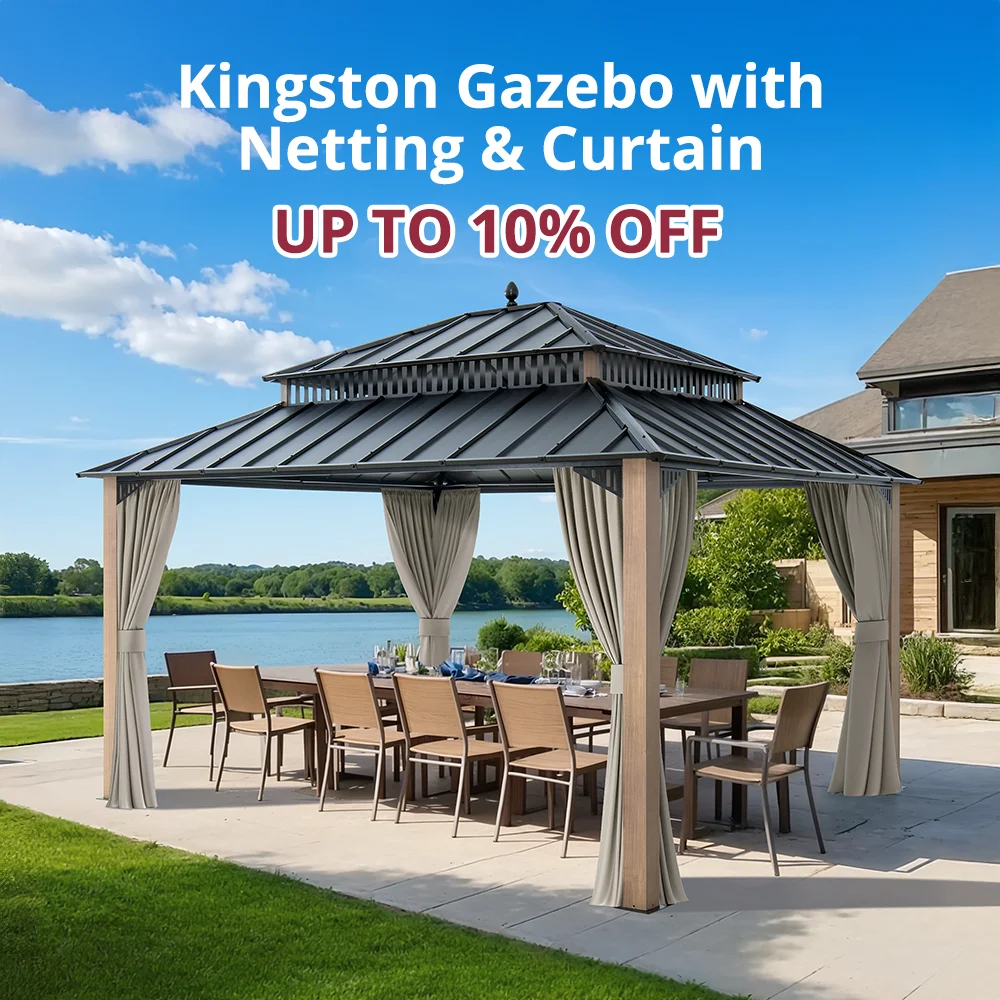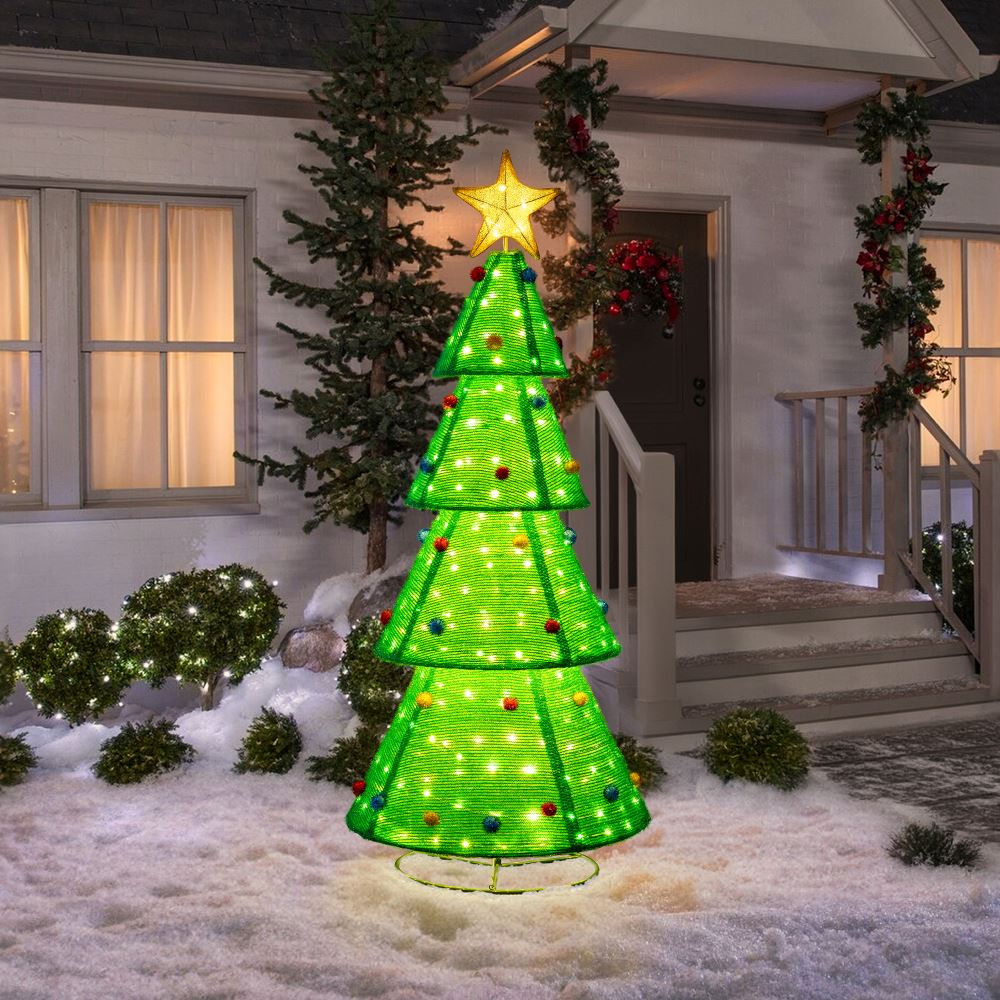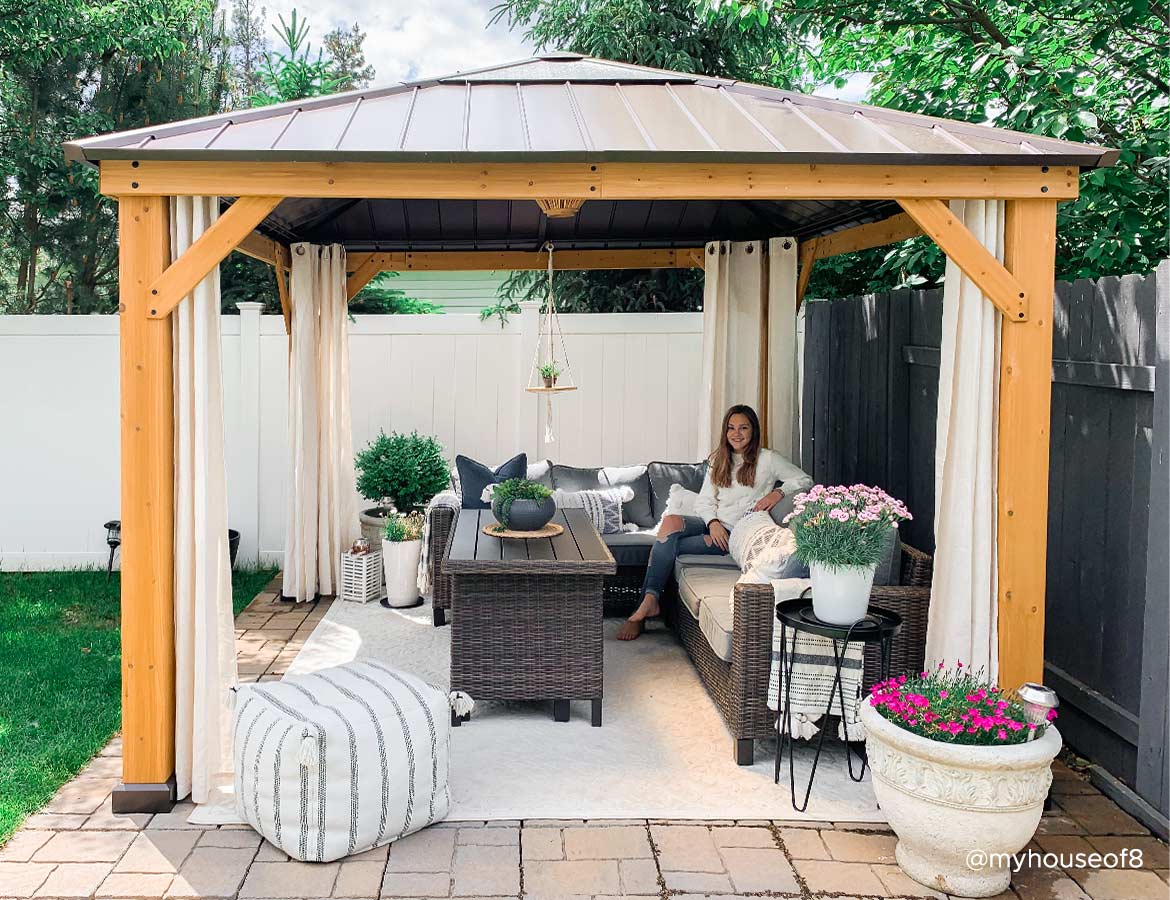1. Pergola vs Arbor: A Quick Overview
The terms pergola vs arbor are often used interchangeably, but they serve different roles in landscape design.
Pergolas are larger structures often used to create shaded walkways, patios, or seating areas. They typically feature a flat roof supported by four or more posts.
Arbors, on the other hand, are smaller, decorative elements used primarily to mark an entryway or path. Most arbors are arch-shaped and support climbing plants.
So while both provide visual interest and structure, their scale and function set them apart.
2. Pergolas and Arbors: Purpose and Placement
Understanding where and how these structures are used can help guide your decision.
Pergolas and arbors enhance outdoor living spaces, but they do so differently:
A 4 post pergola can define a dining space, provide shade, or serve as the framework for lighting and plants. It's commonly placed over patios or decks.
An arbor is best used to frame a garden entrance, pathway, or seating bench, giving a more romantic or whimsical feel.
If you're building a large outdoor living area, a pergola is usually the more practical choice.
3. Structural Differences Between Pergolas and Arbors
Let’s dig into the architecture. A pergola is a freestanding or attached pergola structure with open sides and a roof formed by beams or lattice. It’s designed to be walked under or used for shade and shelter.
Key pergola features:
Usually made with four or more vertical posts (e.g., 4 post pergola)
Can be installed with a pergola with retractable canopy for adjustable shade
Often covers seating, hot tubs, or outdoor kitchens
Arbors, by contrast, are more compact:
Often just 2–3 feet wide
Made with curved or arched tops
Ideal for plant growth like roses or ivy
Arbors are more ornamental, while pergolas are structural and functional.
4. Material and Design Options
Pergolas and arbors come in various materials including wood, metal, and vinyl.
Pergolas may feature:
Sturdy wood or aluminum construction
Optional accessories like lighting, privacy screens, or even a pergola with retractable canopy
Modern or rustic aesthetics depending on finish and roof design
Arbors are typically:
Made of lighter materials like cedar or wrought iron
Simpler in structure and easier to install
Best for decorative and botanical purposes
Your material choice should depend on climate, maintenance expectations, and how much shade or cover you need.
5. Pergola with Retractable Canopy: A Functional Upgrade
One way to increase a pergola’s usefulness is by installing a pergola with retractable canopy. This allows you to adjust the amount of sunlight or shade you want throughout the day.
Advantages include:
Protection from harsh sun or light rain
Flexibility for changing weather conditions
Aesthetic appeal with soft fabrics or sleek panels
This is a feature that doesn’t apply to arbors, which generally don’t provide functional coverage.
6. Attached Pergola vs Freestanding Structures
Some pergolas are designed to attach directly to a home or building. An attached pergola acts like an extension of your indoor space and often creates a transition zone between indoors and outdoors.
Benefits of an attached pergola:
Convenient for patios or decks
Easier to run lighting or ceiling fans
Can increase property value and usability of outdoor space
Arbors are almost always freestanding and usually placed away from buildings, which limits their structural function.
7. Installation and Cost Considerations
Building a 4 post pergola involves more labor, materials, and permits than installing a small arbor. If you're budget-conscious or want a weekend DIY project, an arbor may be the quicker, more affordable choice.
Pergola installation involves:
Anchoring posts securely (especially for freestanding models)
Optional roofing, shade, and electrical upgrades
Professional or experienced DIY work
Arbor installation is simpler:
Often comes as a pre-fabricated kit
Can be installed with minimal tools and time
Usually doesn’t require permits
8. Which One Should You Choose?
When deciding between a pergola vs arbor, ask yourself:
Do I want shade or just decoration?
Am I covering a living space or framing a walkway?
What is my budget and how much space do I have?
Choose a pergola with retractable canopy or an attached pergola if you want a versatile structure that enhances outdoor living. Opt for an arbor if your goal is to highlight garden paths or create romantic visual interest.
Conclusion: Know the Difference, Choose the Right Structure
Though often confused, pergolas and arbors have distinct roles in outdoor design. A 4 post pergola or attached pergola is great for structure and function, especially when paired with a pergola with retractable canopy. Meanwhile, arbors offer a more delicate, decorative touch for gardens and paths.
Understanding the difference helps you make the best investment for your outdoor space—and ensures the structure you choose adds both beauty and purpose.






Leave a comment
All comments are moderated before being published.
This site is protected by hCaptcha and the hCaptcha Privacy Policy and Terms of Service apply.